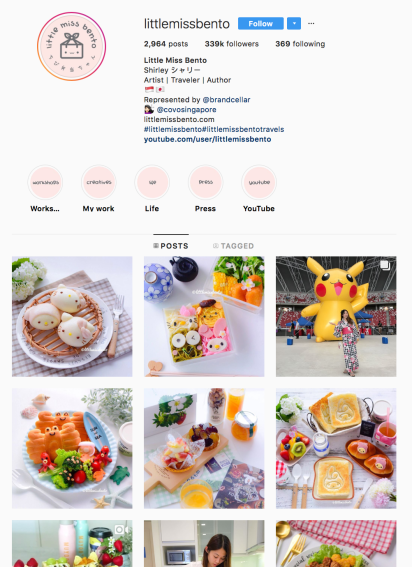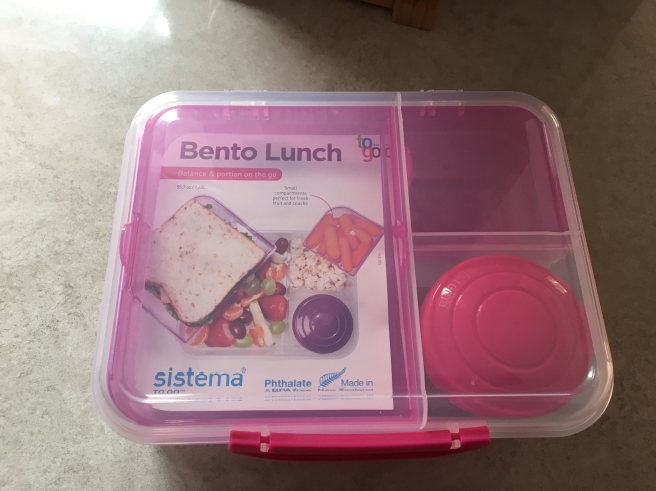Ellis describes autoethnography as “an approach to research and writing that seeks to describe and systematically analyze (graphy) personal experience (auto) in order to understand cultural experience (ethno).”

bread roll floated around in my bag for lunch, with a muesli bar for recess. At university, I usually don’t even bring lunch, mostly opting to buy something from one of the many food outlets available on campus.

I’d like to order something different but the fear of not knowing what I am ordering is a major barrier. Venturing into the extensive world of Japanese food is a must because I know I’m missing out on something amazing. From the images of them I have seen in pop culture, TV, movies, and social media, Bento is a great way to start as I get a little taste of everything in each of the compartments.
Bento is a take-out or home-packed meal common in Japanese cuisine. Initial research has informed me that in each of the compartments, a traditional bento includes rice or noodles, fish or meat and pickled and cooked vegetables.
Served in a box, bento originates from a slang term, biàndāng, meaning convenience. In Japan, they’re readily available as take-out meals in convenience stores, bento shops (bentō-ya), railway stations and department stores.
Aside from take-out options available to purchase, bentos are also prepared as home-packed meals. Japanese homemakers often spend time and energy carefully preparing these lunch boxes for their children, partners and themselves to take to school or work.

In Japan, mothers often prepare the ingredients the night before and pack everything the following morning before their children go to school. Just as my mother did with my sandwiches- although arguably a lot simpler to make than bentos.
Furthermore, social expectations in Japan drive the bento preparation. Where mothers often have a social expectation to provide nutritionally balanced and aesthetically pleasing meals for their children. In Japan, this careful food preparation is expected of the mother and emphasised by society at large.
I remember it almost being uncool to bring a home-packed meal from mum in my Australian high school. It was cool to come to school with a 5 dollar note and order something from the canteen. Nor, did my mum carefully and extensively prepare our thrown-together cheese bread roll lunches.
Aesthetics are important too in bento preparation. This is an unfamiliar concept for my often squished, greasy sandwiches in plastic zip-lock bags. In Japan, it is socially acceptable for mothers to a make aesthetically pleasing meals for their children. For mothers, the bento is an expressive medium. A type of bento, kyaraben, is decorated to look like popular characters from Japanese animation (anime), comic books (manga), or video games.
Another type of bento, oekakiben, or picture bento, is decorated to look like people, animals, buildings, monuments, flower and/or plants. Competitions are held where bento arrangers compete for the most aesthetically pleasing arrangements.
Seddon notes the importance of bento blogs as well, in which mothers post their food-based creations on the internet sharing ideas and experiences. Bento blogging an increasingly common practice both inside and outside of Japan.
(Bento blogs) “Reiterate the importance of bento within Japanese socialization and the gendered role in preparing it, but claim a public setting for their work. Blogs thus offer a visual and literal articulation of the effort that goes into these otherwise ephemeral creations.” Seddon

Not only is preparing aesthetically pleasing lunches a reflection of social expectations of mothers, but a reflection of Japanese society and culture as a whole according to Ekuan. He sees the bento as a key to understanding Japanese civilisation, spirit of form and the aesthetic ideals of the culture. The bento reflects ancient Japanese rituals, design, landscapes, technology and etiquette.
According to Ekuan, the lunch box is both an object, and a metaphor for the Japanese culture.
“Japanese artisans have focused on compactness in their designs, drawing out of the smallest possible space and time the richest, fullest possible experience.” Ekuan
In an age with increasing concerns for single-use plastic, obesity and unhealthy eating, meal-prepping is an increasingly important practice, combating both packaging wastage and unhealthy eating. For my digital artefact, I would like to create home-packed bentos which I will take to university as my lunch instead or purchasing expensive and unhealthy foods wrapped in wasteful single-use plastic.
I will be following recipes from bento bloggers and trying to make my bentos as delicious and aesthetically pleasing as Japanese custom. I will be documenting my experience in a video series talking about the ease of buying ingredients, prepping and cooking the different Japanese foods (in both a skill and time sense), and the practicalities of physically taking my bento to university.
I have purchased a ‘bento’ box from an Australian retailer, Big W for $6. Purchasing a good quality box from Japan proved to be quite expensive, so I decided to opt for the cheaper alternative. However this may lose my bento some of it’s Japanese cultural authenticity.
https://twitter.com/briloulaw/status/1037131932834754560






Reblogged this on Digital Asia.
LikeLike
Hey Bri, cool idea! I am also very uncultured when it comes to venturing out and trying new food. I was drawn to your blog post as I’ve never heard the term Bento and was intrigued to find out how much effort it takes from bringing your “gourmet lunches” to school in Japanese schools. The Ellis et al reading also describes autoethnography as “both process and product” which can be shown in your post as you’re linking your past and personal experiences, as your ‘product’ is going to be a mixture of engaging your audience through showing them the process through your video series and aesthetically-looking Bentos.
Can’t wait to see how they go, good luck!
LikeLiked by 1 person
This is such a great idea! As your classic sandwich and Le Snack style school gal myself, this is a concept I have never put much thought into. Looking at lunchtime preparation and product cross culturally and the motives behind them is such an interesting concept. While I was aware of Bento Boxes and the delicious food they have on offer, I had no idea about the different types of bento boxes and their inherently distinctive aesthetic characteristics. I am interested in the social aspects that drive the different ways that mothers create their bento boxes. Your project aligns with what Leon Anderson (2006) describes to be auto-ethnography in his article, Analytical Auto-ethnography, in that you’re research into bento boxes in Japan and your own creation of them for university lunches shows a commitment to developing a theoretical understanding of a broader social phenomenon. I’m really looking forward to watching you create your own bento boxes and seeing what you produce!
LikeLiked by 1 person
Oh wow this post made me so hungry!
I find it so interesting that people use bento boxes as a creative outlet, rather than just a simple means of packing food. Although I’ve heard of people doing similar things in the U.S., where a few celebrities have talked about making creative, playful lunches for their children, I doubt it’s as much of a phenomenon as you’ve described here. It’s an amazing idea because it would encourage kids to be excited about eating healthy food, which is obviously incredibly important!
When it comes to school lunches, I’ve definitely has a similar experience to you – as most Australian kids have. As Ellis, Adams and Bochner (2011) state in their article, us auto-ethnographers must also consider the way that others will experience their ‘epiphanies’, in order to enhance the familiarity of the culture to outsiders. This research project is great for achieving this, because so many of our peers will have also had similar experiences, allowing us to have a deeper connection to this unfamiliar culture.
I’m excited to see your experience making your own bento boxes! I’m interested to find out your opinions and whether or not it will be time consuming, cost effective, or perhaps worth doing on a daily basis (…maybe just a few times a week).
Looking forward to seeing your project!
LikeLiked by 1 person
I love this idea so much! Looks like so much fun!
I have previously had knowledge of some bento boxes simply because I’m an avid sushi eater, though I was unaware of all the different types, and the fact that people sell the actual boxes? News to me! I find it incredibly interesting to know that this is what Japanese children eat for school lunch every day, it seems so incredibly different, having grown up in Sydney suburbs my whole life, sent to school with a sandwich, some fruit and a drink bottle! As Ellis states: “As a method, autoethnography combines characteristics of autobiography and ethnography”. I definitely see a great example of this within your blog as you gave examples of how you grew up with lunch, and compared it to what you have learnt of Japanese children to grow up with!
LikeLiked by 1 person